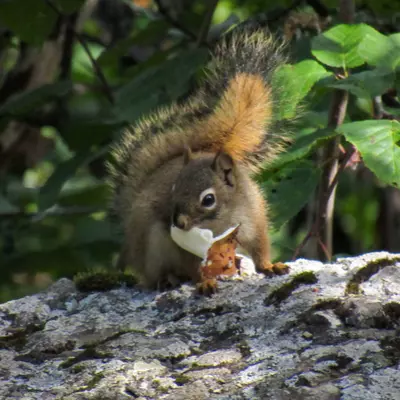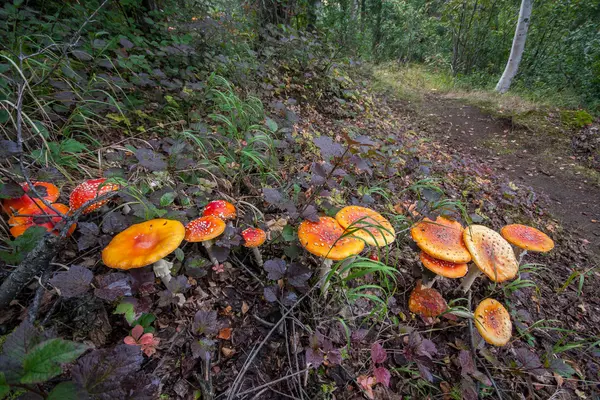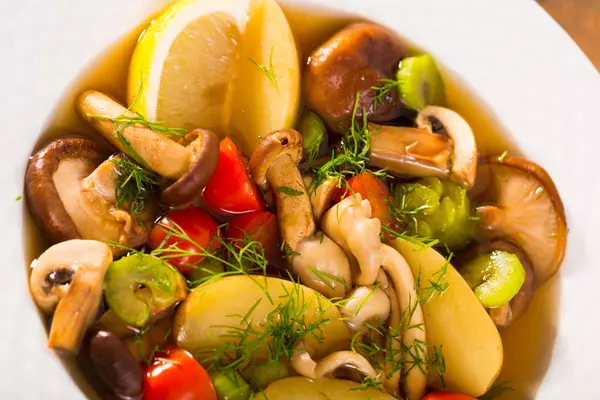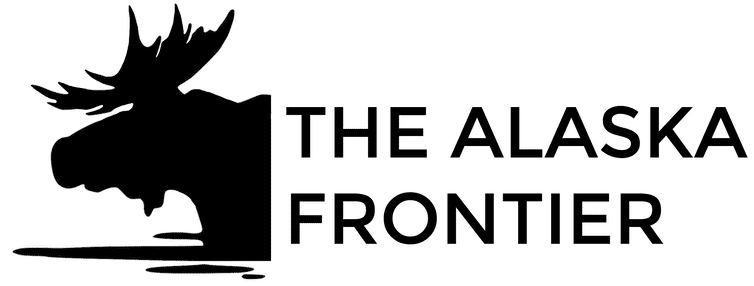Alaskans are always outside enjoying this glorious state and gathering the fruits of the earth. In late summer and autumn, the hillsides are covered in berries, the rivers are full of salmon, and everyone is feasting to fatten up for winter. Wild mushrooms also flourish this time of year and can be an excellent source of wild food. Alaska boasts a variety of fungi that can be safely gathered, cooked and enjoyed at home.
Hunting for mushrooms is a great activity for Alaskans to enjoy together. Head out to the forests and hillsides and remember to bring your friends and family along. Everyone will have fun searching for the forest treasure and identifying the species, carefully examining to make sure you get the delicious mushrooms. And of course, the whole group will enjoy the mushroom feast at home afterward.

How Do I Go Mushroom Hunting?
Mushrooms are found on forest floors, whether in the rainforests of the Tongass National Forest or the boreal forests of the interior. You will want to head out into the forest in the late summer and autumn in Alaska, usually in August and September. The ideal time is in the weeks after heavy rainfall.
Most public lands allow mushroom gathering for personal consumption but check with local authorities to confirm the spot you are thinking of is safe. Stay clear of roadsides, yards, or anywhere chemicals may be present.
What To Bring:
- A knife to slice off mushroom stems
- Woven basket to carry mushrooms
- Wax paper to separate varieties
- Map, compass, or GPS. It is easy to find yourself without phone service
- Waterproof coats, pants and boots for optimum comfort
- Standard hiking gear: bear spray, first aid, snacks, water and warm layers
When you get to the forest, search under the branches by gently pushing them aside with a stick. Search for freshly-grown young mushrooms as they are less likely to have any insects inside and have nice firm flesh. If you see an older, rotten mushroom, a young one of the same variety may be nearby.
Pull the whole mushroom out of the ground by using your fingers to free it from the underground mycelium. This helps the mycelium grow more mushrooms. Cut off the stem and brush off any insects before placing in the basket. You will want to use a woven basket as plastic containers will trap moisture and will degrade your mushrooms very quickly.
Gather groups of young, healthy mushrooms and keep them separated in the basket, wrapped loosely in wax paper or aluminum foil. Choose several specimens from an area so you have more for comparison when you are identifying them.
Note the surroundings in a notebook, number the mushrooms and snap a photo of the spot to help determine the variety.
When the days seem like they last forever, sometimes you can get lost enjoying yourself in the woods and find yourself in the dimming light. Mushroom hunting can be so enjoyable, you lose track of time and distance. Keep your wits about you and head home with plenty of time to get off the trail before dark.
How To Identify Edible Mushrooms
Once you get home, you will want to want to lay all your mushrooms out and look them up. The best advice is to only gather and eat mushrooms that you can clearly identify as edible. If you have a friend with mushroom hunting experience, ask them to show you the ropes.
Mushrooms with gills under the cap are harder to identity and should be avoided by beginners. Look up each type and refer to the photo and notes to make certain you have found safe fungi.
Use this Forest Service Guide as a reference. There are 40 pages of mushrooms, pictures and detailed descriptions of each mushroom.
There are a wide variety of Alaskan fungi, but these are some of the most popular:
- King Bolete (Boletus edulis) – also known as porcini, with firm, white flesh and delicious flavor
- Gray Fire Morel (Morchella tomentosa) – found after forest fires and a good rain
- Pacific Golden Chanterelle (Cantharellus formosus) – found in Southeast Alaska
- Alaskan Scaber-Stalk (Leccinum alaskanum) – Small bolete variety that grows under birch trees
Poisonous Mushrooms To Avoid
Alaska boasts a wide variety of mushrooms and many of them are not safe to consume. Be careful when identifying to avoid any mushroom you are unsure about. Enjoy wild mushrooms in moderation as even non-poisonous varieties contain some toxins.
Amanitas are brightly colored, spotted, large, conspicuous and generally poisonous. Varieties to avoid include:
- Yellow Patches ( Amanita augusta )
- Grisettes ( Amanita vaginata group)
- Fly Agaric ( Amanita muscaria )
- Fairy Bonnet Mushrooms / The Genus Mycena

What To Do With Your Mushrooms
Once you have determined which mushrooms are safe to eat, with a brush or paper towel clear them of debris. Cut mushrooms in half to make sure there are no worms or other insects inside and prepare them immediately for cooking or drying.
Fresh mushrooms sauteed in butter or olive oil with a sprinkle of fresh herbs is an excellent celebratory treat for a successful mushroom hunt.
Using wild Alaska mushrooms in soup is another great way to enjoy both the flavor and something warm.

Slicing and drying them in a dehydrator is a great way to save mushrooms for the winter. The delicious kick of wild mushroom flavor adds depth and umami to any winter soup or rice dish. Once you start mushroom hunting in Alaska, you will want to jump on every opportunity to gather and eat Alaska’s wild edible mushrooms.
Carey Seward has written about travel for the Jeju Weekly News (South Korea) and The Cardamom Diaries Blog (Guatemala). Seward is also a
multidimensional artist who writes, directs, produces and performs original works in theatre, film, music and on the page. Theatrical projects written, directed and produced in Fairbanks, Alaska. She has also produced, costume designed and performed with the Fairbanks Shakespeare Theatre since 2000, most recently performing as Music Director and Band Leader for Macbeth (2019), as well as leading the company as Executive Director from 2017-2019. As a teaching artist, Seward works as an Artist in the Schools (2004-2019) teaching
drama, playwriting and Shakespeare. In 2021, pursuits include Theatre Alaska’s AK Writer’s Workshop 2021, a student at Primary Stages ESPA and On the Page Screenwriting Studio, publishing the “With Love” Travel Romance series and writing for The Alaska Frontier.
